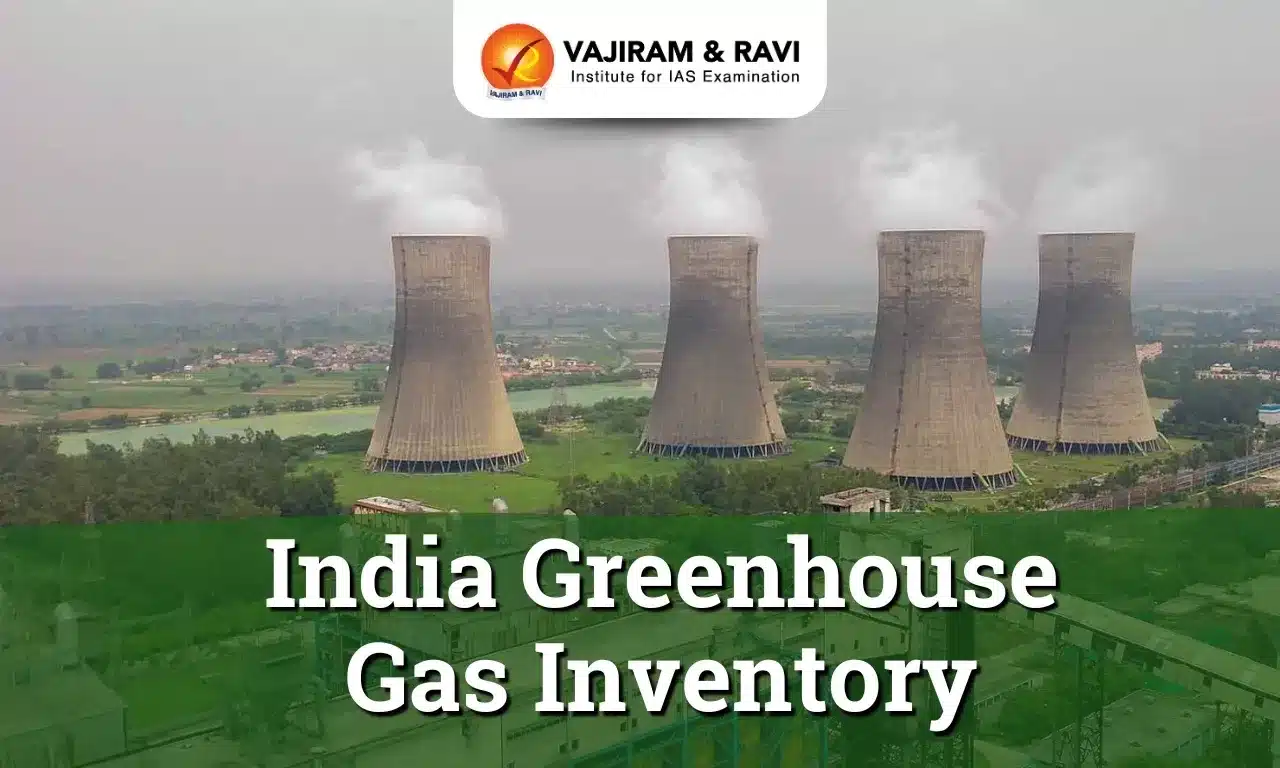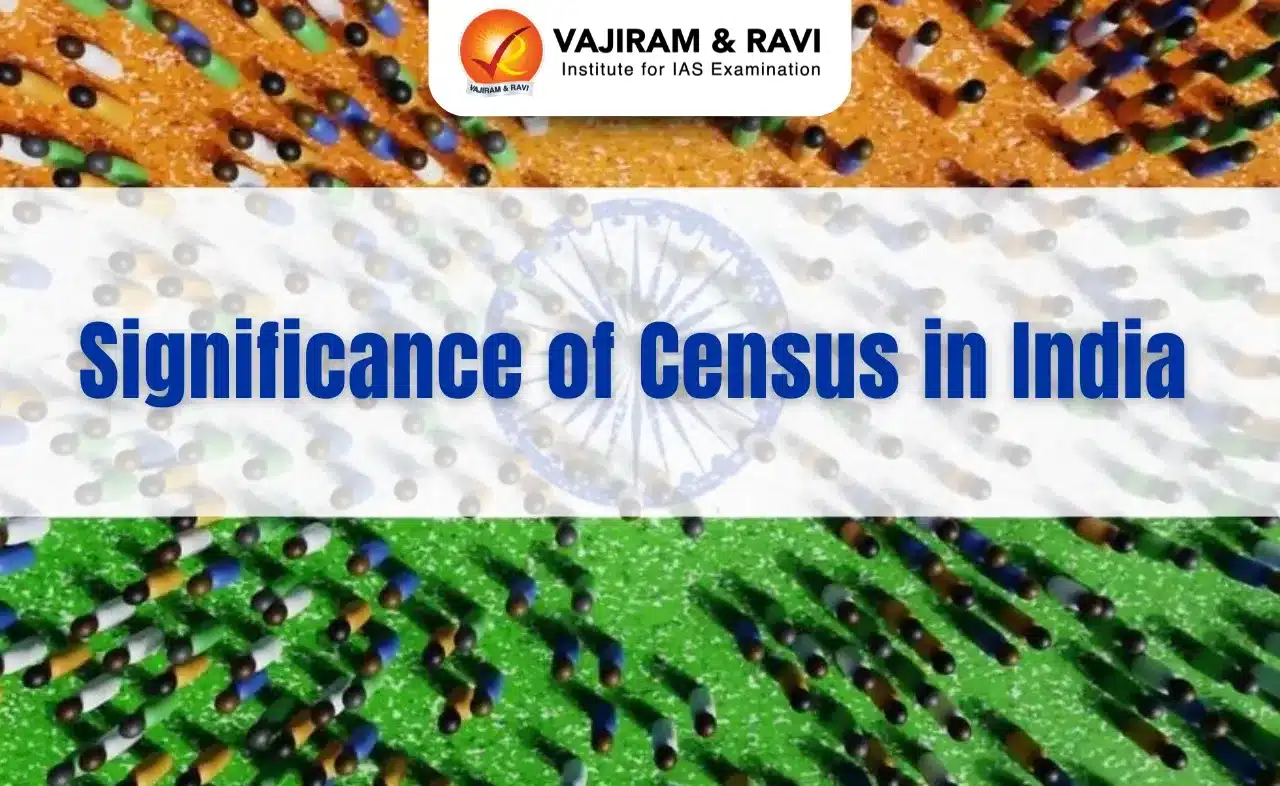What’s in Today’s Article?
- Biannual Transparency Report Latest News
- Introduction
- About the Biannual Transparency Report (BTR)
- Key Findings from India’s Previous Greenhouse Gas Report
- Challenges in Preparing the Greenhouse Gas Inventory
- India’s Global Emissions Contribution
- Conclusion
- India’s Greenhouse Gas Inventory Submission FAQs
Biannual Transparency Report Latest News
- India is in the final stages of preparing its first ever Biannual Transparency Report (BTR), part of its commitment as a signatory to the Paris Agreement 2015 on climate change.
Introduction
- India is in the final stages of preparing its first-ever Biannual Transparency Report (BTR) as part of its commitments under the 2015 Paris Agreement.
- The Ministry of Environment, Forest and Climate Change (MoEFCC) will submit the report to the United Nations Framework Convention on Climate Change (UNFCCC).
- The BTR will include data up to 2022 and will be subject to independent expert review.
- This submission marks a significant step toward enhancing transparency in India’s climate actions and reporting greenhouse gas (GHG) emissions accurately.
About the Biannual Transparency Report (BTR)
- The BTR is an official document that provides details on:
- India’s greenhouse gas emissions inventory (sectors and sources of emissions).
- Efforts to improve energy efficiency and shift to renewable energy sources.
- Availability of resources for climate action.
- While India has previously submitted National Communications and Biannual Update Reports (BURs), the BTR is unique because it undergoes technical review by UNFCCC-accredited experts.
- Significance:
- Commitment to the Paris Agreement – The Paris Agreement mandates countries to report on their climate action efforts, and BTR is a step toward fulfilling these commitments.
- Greater Transparency – Unlike BURs, which are internally reviewed, BTRs undergo external technical scrutiny, ensuring accuracy and reliability.
- Reflecting Post-COVID Emission Trends – India’s previous BUR (submitted in December 2024) contained data up to 2020, showing a 7.93% drop in emissions due to COVID-19 lockdowns. The upcoming BTR is expected to show a rise in emissions as economic activities resumed.
Key Findings from India’s Previous Greenhouse Gas Report
- According to India’s last Biannual Update Report (BUR) for 2020, key insights included:
- Total greenhouse gas emissions (excluding forestry & land use change): 2,959 million tonnes of CO₂ equivalent (CO₂e).
- Net emissions (including forestry & land use change): 2,437 million tonnes of CO₂e.
- Sector-wise emissions breakdown:
- Energy sector: 75.66%
- Agriculture: 13.72%
- Industrial processes & product use: 8.06%
- Waste sector: 2.56%
- Additionally, India’s forest and tree cover helped sequester 522 million tonnes of CO₂, reducing total carbon emissions by 22%.
Challenges in Preparing the Greenhouse Gas Inventory
- The preparation of the BTR is a complex process involving multiple government agencies, research institutions, and private organizations. Some challenges include:
- Collecting accurate and updated data across different sectors.
- Ensuring consistency with international reporting standards under UNFCCC.
- Addressing post-pandemic fluctuations in emissions trends.
India’s Global Emissions Contribution
- India’s total GHG emissions account for 4-5% of global emissions.
- India’s per capita emissions are less than one-third of the global average.
- These statistics highlight that while India is among the largest emitters, its per capita emissions remain significantly low, reinforcing its stance on fair and equitable climate responsibility.
- Future Outlook: India’s Climate Action Plan – India is actively working toward its climate goals, including:
- Achieving Net Zero by 2070 – A long-term commitment made at COP26.
- Expanding Renewable Energy Capacity – India aims for 500 GW of non-fossil fuel energy by 2030.
- Enhancing Carbon Sequestration – Increasing forest cover and promoting sustainable land-use practices.
Conclusion
- India’s first Biannual Transparency Report (BTR) is a crucial step toward strengthening its global climate commitments.
- By providing detailed and transparent data on emissions and mitigation efforts, India aims to align with international climate action frameworks. While challenges remain in data collection and accuracy, the submission of the BTR will enhance India’s credibility in climate negotiations and contribute to informed policymaking.
India’s Greenhouse Gas Inventory Submission FAQs
Q1. What is the Biannual Transparency Report (BTR)?
Ans. The BTR is India’s official report detailing its greenhouse gas emissions, climate actions, and energy transition efforts as per the Paris Agreement.
Q2. How is the BTR different from India’s previous reports?
Ans. Unlike previous reports (BURs), BTRs undergo independent expert review by UNFCCC-accredited specialists, ensuring greater transparency.
Q3. Why is the BTR submission significant?
Ans. It reflects India’s post-COVID emissions trends, provides sector-wise emission insights, and strengthens India’s global climate commitments.
Q4. What are India’s largest sources of greenhouse gas emissions?
Ans. The energy sector (75.66%) contributes the most, followed by agriculture (13.72%), industrial processes (8.06%), and waste (2.56%).
Q5. How does India compare globally in terms of emissions?
Ans. India accounts for 4-5% of global emissions, but its per capita emissions are less than one-third of the global average.
Source: TH
Last updated on June, 2025
→ UPSC Notification 2025 was released on 22nd January 2025.
→ UPSC Prelims Result 2025 is out now for the CSE held on 25 May 2025.
→ UPSC Prelims Question Paper 2025 and Unofficial Prelims Answer Key 2025 are available now.
→ UPSC Calendar 2026 is released on 15th May, 2025.
→ The UPSC Vacancy 2025 were released 1129, out of which 979 were for UPSC CSE and remaining 150 are for UPSC IFoS.
→ UPSC Mains 2025 will be conducted on 22nd August 2025.
→ UPSC Prelims 2026 will be conducted on 24th May, 2026 & UPSC Mains 2026 will be conducted on 21st August 2026.
→ The UPSC Selection Process is of 3 stages-Prelims, Mains and Interview.
→ UPSC Result 2024 is released with latest UPSC Marksheet 2024. Check Now!
→ UPSC Toppers List 2024 is released now. Shakti Dubey is UPSC AIR 1 2024 Topper.
→ Also check Best IAS Coaching in Delhi













